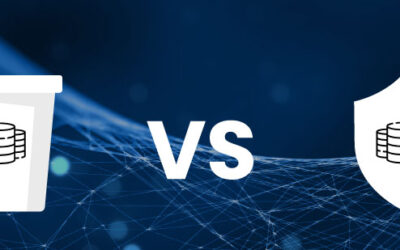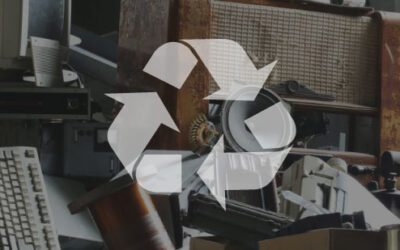Recycling vs ITAD
Introduction:
In the modern IT industry, it’s a common practice to rely on either recyclers or ITAD businesses to dispose of IT equipment properly. Since there are so many different companies that offer these services, it can be really difficult to find the right one.
We will contrast ITAD services with recycling services here.
ITAD offers a diverse range of benefits, including ethical e-waste management; data erasure; shredding services; repurchase and sales of IT equipment; etc. On the other hand, by recycling our used or outdated equipment, we directly enable the recovery of important metals, chemicals, and plastics that can help produce new equipment.
This post will help you choose wisely between ITAD and recycling services by providing you with the information you need.
What does Recycling do?
Any outdated, unusable, broken, or non-functional electronic equipment can be recycled quite effectively. Even if those obsolete devices have no market value, they nonetheless contain precious and dangerous materials that must be recycled. By recycling our used IT equipment, we help to recover important metals, chemicals, and plastics that can be used in manufacturing of new devices.
1. Reduce
Reduce simply refers to reducing the amount of waste we produce. You can stop the issue in its tracks by lowering the amount of trash we generate. There will be less refuse to clean up if there is less waste created in the first place.
2. Reuse
Reuse is the process of giving a new life to an outdated electrical device that would have been thrown out. Electronic devices can be reused in many forms. It is essential that the data from the reused IT equipment be removed and not made accessible again.
3. Recycle
Recycling is the process of transforming something used and outdated into a fresh, useful product. In order to reduce the need for more virgin resources, this procedure entails converting waste materials into new goods. The assets are recycled in a safe and reliable manner.
What does ITAD do?
What happens to electronic assets after their useful lives have ended is referred to as ITAD, or IT Assets Disposition. It is a necessary step in the process of getting rid of outdated electronic equipment that the business will no longer need. Every organization should use ITAD since it is secure, safe, and kind to the environment.
1. Asset Valuation
Recovering capital from end-of-life IT assets undoubtedly benefits your company. However, if your assets don’t have much worth, the ITAD businesses should be allowed to subtract them from your overall cost of their services.
2. Data Security and Erasure
Today, data security is essential to every business. If a business discloses client data, that could be dangerous. Strong data security and data erasure methods are used by successful ITAD programmes to ensure even the physical deletion of hardware.
3. Hardware Repair and Refurbishment
In order to maximize earnings through green initiatives, organizations are seeking innovative ways to repair and refurbish IT equipment. ITAD companies sanitize the data, repair and refurbish the assets as necessary, and upgrade systems for reuse with on-demand order fulfillment to recover the most value possible.
4. Recycling and Reusing devices
Reuse is the ideal in ITAD, however, it actually refers to recycling or reusing outdated computers, laptops, and other electronic devices that won’t be used by a business anymore. Additionally, before recycling or repurposing any devices, all data must be removed from them.
| ITAD | Recycling |
| Increase Environmentally-friendly Processes
The primary goal of ITAD is to raise the profile of our obsolete electronics and reduce e-waste while safeguarding the environment. |
Recycling Helps Protect the Planet
The majority of pollution is produced by corporations, which also harms the environment the most. To preserve our world, it is crucial for businesses to recycle as much as they can. |
| Maintain Company Information Secured
ITAD is essential for protecting the company’s information along with being able to store a lot more data. It also ensures efficiency. |
Recycling Saves Energy
Recycling old electronics also saves energy because manufacturing new electronic products from scratch consumes more energy than recycling. |
| Prepare a list of future Purchases
For your company, ITAD can be a means of proper asset management, and planning for the purchases needed in future. |
Recyclables help to save resources
Computers and other electronics are things that can be recycled, allowing for resource reuse. The supply of these resources is kept more secure by recycling. |
| Keep Company Hardware up-to-date
It is a great practice to keep unnecessary equipment out of your office and to be able to invest in new technology so that your hardware is always up to date. |
Less expensive than waste collection and waste disposal
The question of cost-effectiveness can also be reframed as recycling turns out to incur less expenses for your organization than spending in storing, managing, and then hiring vendors for collection and disposal of your e-waste. |
Though taking on different approaches, the benefits of recycling and ITAD are similar on a technological level as both are in charge of “disposition” of IT assets with the objective of recouping the maximum value from the equipment.




